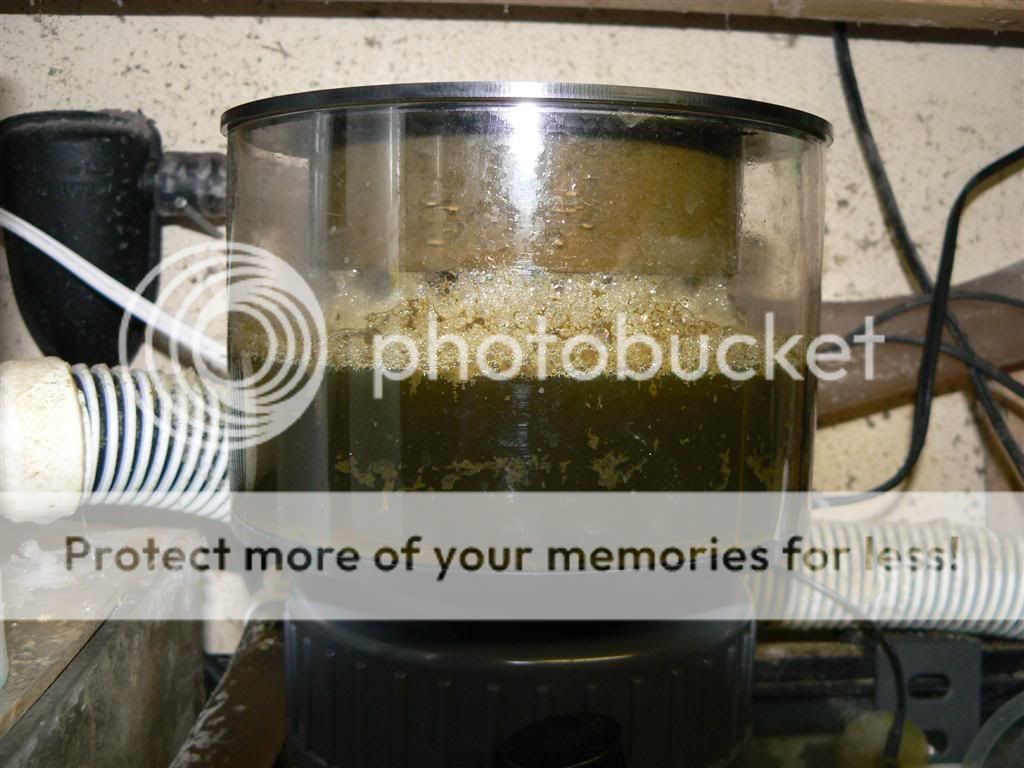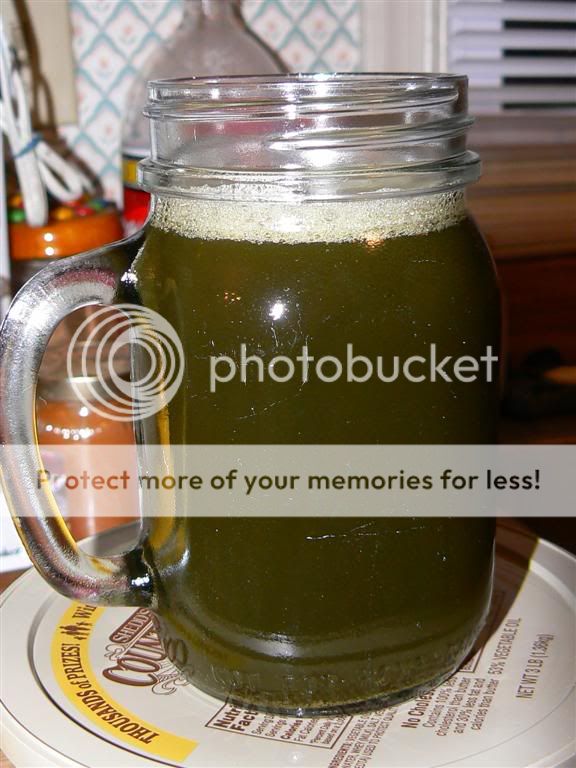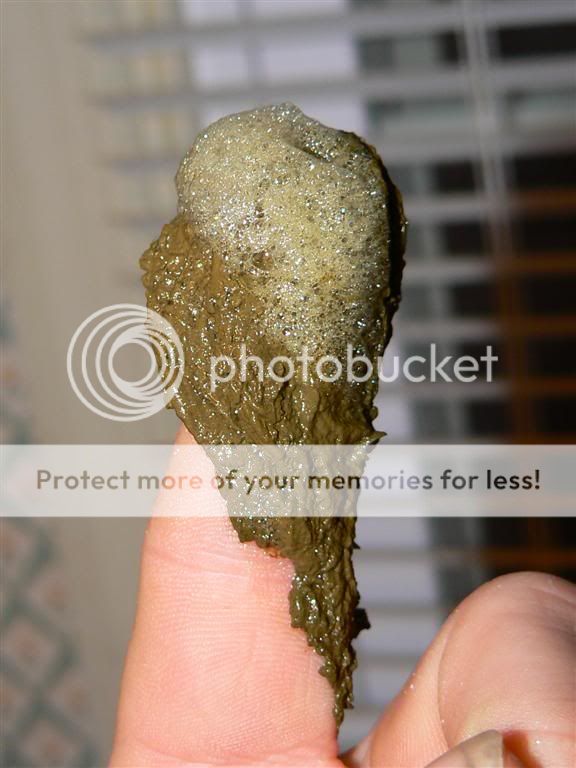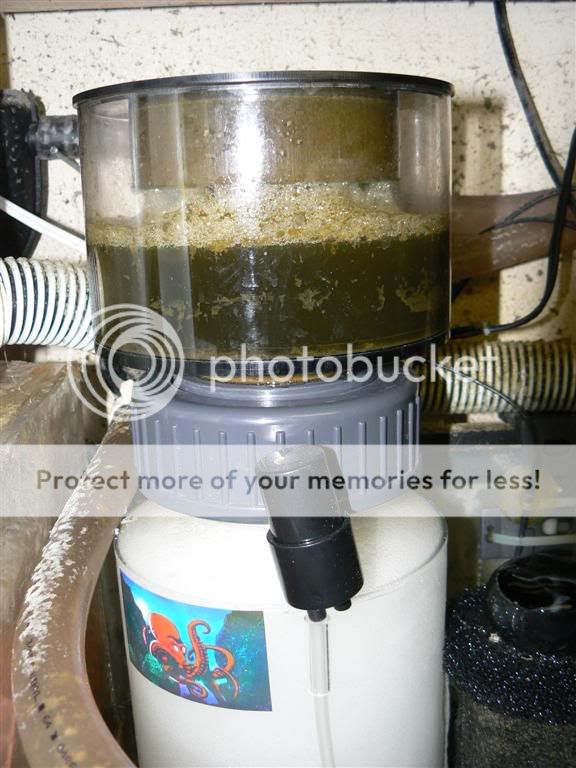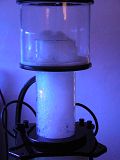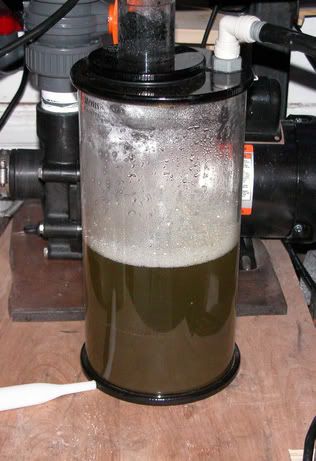Here is a post that I made on RC
here. Randy is coming out with a new article this month on skimming that I'm looking forward to reading. I'm curious about what you guys think and if this is off.
_____
I think experience and results are very important in this hobby. When I take someone's advice I usually look at their tank and find out how long they have been able to keep it. From the pics I've seen, Gcarroll is a successful SPS keeper and an experienced one, I would kindly suggest you take his advice more strongly.
<a href=showthread.php?s=&postid=7834981#post7834981 target=_blank>Originally posted</a> by ChemE
Actually the movement has been going on for a while. I first got turned on to this concept when I read this thread...
Why do we assume a large return pump is needed?
The two tanks he based his arguements are very different. The first tank which uses a deltec skimmer and a very low flow has only about 12 (mostly smaller) fish in a 320G tank. He has mostly LPS and doesn't feed his small amount of fish a lot. The second tank uses a ehiem 1262 (~800gph @ 4', 7x return) for a return and a barr beckett skimmer and has one of the most beautiful sps tanks I've seen in a 110G.
How much filtration you need will depend on the type of livestock you want to keep. I agree that saving energy is a must but your tank will need a certain amount of filtration to thrive. If you don't want to use much electricity at all, forget the skimmer and get a huge fuge and grow a bunch of macro in there. But if your primary (possibly only) source of filtration is going to be a skimmer and your going to keep fish and sps (if your not nevermind) then 1.5X sump flow won't cut it. Because any skimmer that only requires 1.5X won't be big enough for that type of tank. For a 120g I wouldn't put anything less than a ap702 (if I was going deltec needlewheel). People have seen a huge difference when they've gone from an ap600 to an ap702 in terms of color and growth for example. Whereas your tank may survive, it might not thrive. For my 120g I have a barr beckett 5220 run off a sequence hammerhead (acts as my return also) but I'm probably at the extreme. The hammerhead is supposed to use 350W but on the beckett it uses 245W which is about $36 a month in NY. But if I went with an ap702 which uses 104W and needs 610gph, even if I feed off the overflow and used an ehiem 1262 that would be 180W total thats still around $25. So I'm paying $11 more a month for IMO a much better skimmer and one that cost a lot less.
The best skimmer resource I've seen is
here.
<a href=showthread.php?s=&postid=7835031#post7835031 target=_blank>Originally posted</a> by ChemE
Ok, no worries. I just wanted to make sure I responded to what you intended to say.
Just because a skimmer is rated for a flow rate of 600 gph doesn't mean that it will totally clean that flow and it probably won't even come close. This is why there isn't any harm in reducing the flow rate through the skimmer. Now in the case of downdraft skimmers which rely on high flow rates to get the air in the reaction chamber, things obviously change. But I am very skeptical that any skimmer will remove all the junk from water in one pass. If I was wrong about this point, then I would be wrong in recommending a diminished flow rate through the skimmer/sump loop.
With regard to recirculating needlewheels and CC airstone skimmers, you want the lowest flow rate possible which will keep the display surface clear. This allows for maximum dwell time within the skimmer and ensures that the water flowing into the skimmer is as dirty as possible.
I don't know a lot about skimmers, I have a basic understanding, but some of your ideas contradict some articles I have read. Here is a passage from an article by Randy Holmes-Farley.
Once the skimmer has generated a large amount of surface area, the next issue involves allowing enough time for organics to actually diffuse to the interface. How long does this take? That's an important question without a perfect answer. Diffusion of molecules in water can be slow. For very large molecules, like proteins and carbohydrates, it can be very slow. It might take hours for a protein to diffuse a few inches in water. Fortunately, we do not need to rely on pure random diffusion to carry organics to the surface. Nearly all skimmers have bubbles in a turbulent environment, where they can be carried around by water flow as well as by diffusion. As they approach the bubble surface, however, movement of water relative to the bubble will be greatly reduced, and diffusion will be necessary for the final travel to the interface. The amount of time necessary for complete accumulation of organics at the surface will also depend upon the concentrations of organics in the water, and even on the chemical nature of the organics present. It makes perfect sense that in water with high levels of organics, the interfacial area will be rapidly occupied by organics. That is because there are enough in the local area around the bubble to saturate the interface. When the concentrations are lower, organics have to diffuse from farther and farther away from the bubble to saturate it. Additionally, different organics have different strengths of binding to the air/water interface. Things which have a strong preference will slowly replace those already at the interface which have a lower binding strength. Thus, a bubble which is completely occupied with organics might still be changing with time on exposure to tank water. It will not, however, go on increasing its organic load indefinitely. For these reasons, one cannot readily state that a certain amount of time is necessary for organics to fully saturate bubbles. Further, it is incorrect to claim that it is always better to increase the contact time between bubbles and the tank water. Likewise, the way in which the bubbles move relative to the water is important. If the bubbles are moving against the water flow, or are in a turbulent environment, the required absorption time will be lower (because the water flow helps bring organics to the interface) than if the bubbles are moving with the water flow.
If we were depending on only diffusion for skimming in low organic tanks then what you said would make more sense to me. But in most of our situation where there are a lot of organics, bubbles can become saturated. Thats why you can take an ap600 on a 120G and replace it with an ap702 and get more skimmate per hour, regardless of flow thru gph. Furthermore, since we aren't depending strictly on diffusion (and the hours it would take) water pathways are also much more important. That's why I like how on my beckett the water and air travel down 3' and then up 4' the whole time fighting against water coming down and with a whole bunch of force (increasing velocity increases momentum) to help with collisions.
<a href=showthread.php?s=&postid=7834633#post7834633 target=_blank>Originally posted</a> by ChemE
Why would 360 gph be too little for a 120? Remember all we want to do is prevent a scum of surface active proteins from building up on the water surface in the display.
There's still a whole bunch of stuff in the water.






